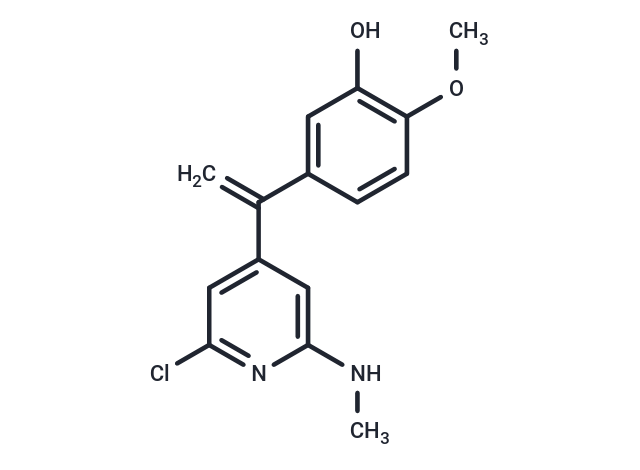Shopping Cart
Remove All Your shopping cart is currently empty
Your shopping cart is currently empty
Tubulin polymerization-IN-14 (Compound 20a) is a tubulin polymerization inhibitor (IC50 = 3.15 μM) that demonstrates strong anti-vascular and anticancer activities, including inducing cancer cell apoptosis [1].

| Pack Size | Price | USA Warehouse | Global Warehouse | Quantity |
|---|---|---|---|---|
| 25 mg | $1,520 | 6-8 weeks | 6-8 weeks | |
| 50 mg | $1,980 | 6-8 weeks | 6-8 weeks | |
| 100 mg | $2,500 | 6-8 weeks | 6-8 weeks |
| Description | Tubulin polymerization-IN-14 (Compound 20a) is a tubulin polymerization inhibitor (IC50 = 3.15 μM) that demonstrates strong anti-vascular and anticancer activities, including inducing cancer cell apoptosis [1]. |
| In vitro | Tubulin polymerization-IN-14 (Compound 20a) targets the colchicine binding site on tubulin to inhibit cancer cell growth at concentrations of 0-1 μM over 72 hours. At lower concentrations (5-20 nM) over 48 hours, it halts the cell cycle in the G2/M phase and triggers apoptosis in K562 cells dose-dependently, causing mitochondrial membrane potential collapse and dysfunction. Over 24 hours at similar concentrations, it reduces wound closure and capillary-like structure formation in HUVECs, suggesting potential anti-angiogenic properties. It demonstrates an anti-proliferative effect with an IC50 of 0.01 ± 0.001 μM against K562 cells and exhibits cytotoxic activity against HepG2, HCT-8, MDA-MB-231, and HFL-1 cell lines with IC50 values of 0.019 to 0.118 μM. Cell cycle analysis reveals a concentration-dependent increase in G2/M phase arrest, while apoptosis analysis shows a significant rise in apoptotic cells, indicating effective induction of programmed cell death. Additionally, cell migration assays in HUVECs highlight a significant dose-dependent decrease in cell migration, emphasizing its role in inhibiting metastasis-related cellular movements. |
| In vivo | Tubulin polymerization-IN-14 (Compound 20a), administered intravenously at 15 and 30 mg/kg daily for 21 days, exhibited a dose-dependent anti-tumor effect in a liver tumor allograft mouse model (Five-week-old male ICR mice), significantly reducing tumor weight by 68.7% at the 30 mg/kg dosage without evident toxicity or significant body weight loss [1]. |
| Molecular Weight | 290.74 |
| Formula | C15H15ClN2O2 |
| Cas No. | 2417134-05-3 |
| Smiles | C(=C)(C=1C=C(NC)N=C(Cl)C1)C2=CC(O)=C(OC)C=C2 |
| Storage | Powder: -20°C for 3 years | In solvent: -80°C for 1 year | Shipping with blue ice/Shipping at ambient temperature. |
| Size | Quantity | Unit Price | Amount | Operation |
|---|

Copyright © 2015-2026 TargetMol Chemicals Inc. All Rights Reserved.